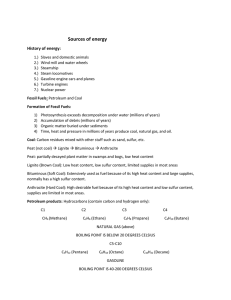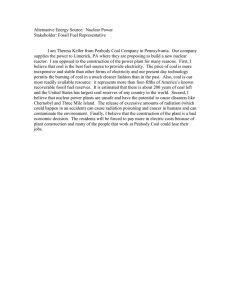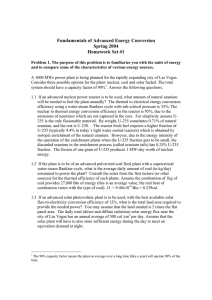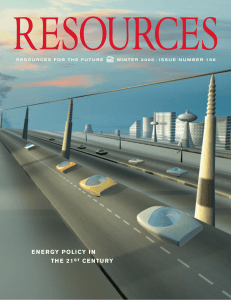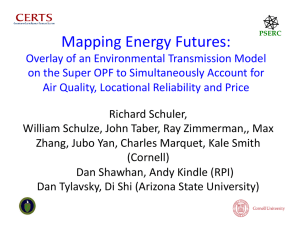ISSUE Fuel Supply Problems? PETROLEUM
advertisement
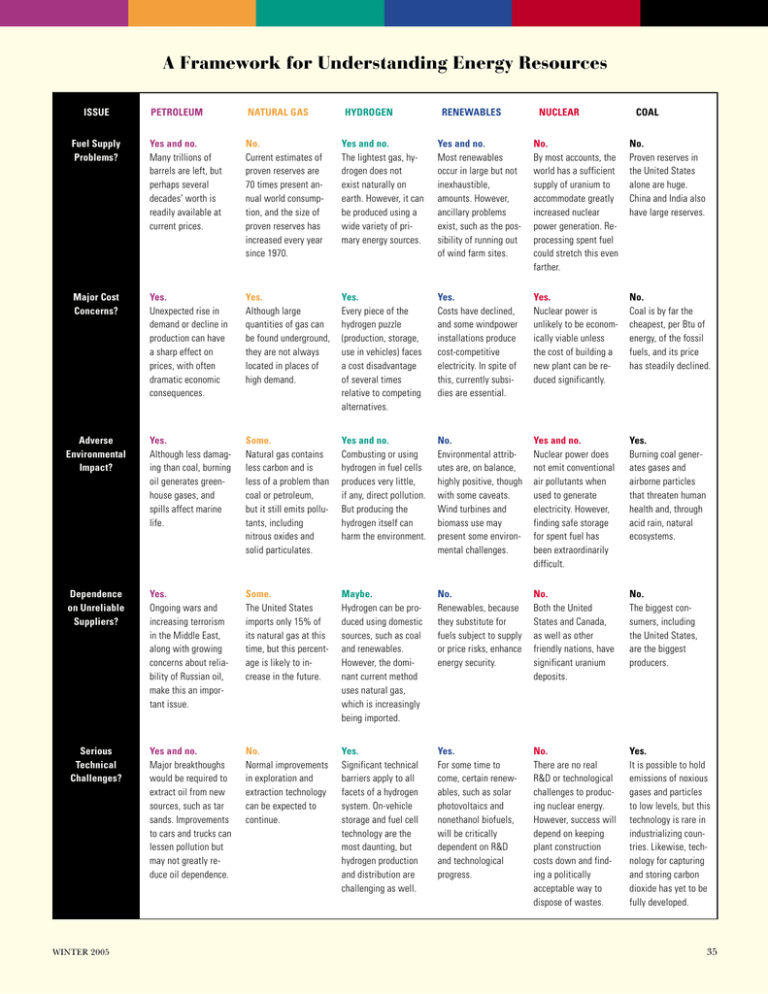
A Framework for Understanding Energy Resources ISSUE PETROLEUM NATURAL GAS Fuel Supply Problems? Yes and no. Many trillions of barrels are left, but perhaps several decades’ worth is readily available at current prices. No. Current estimates of proven reserves are 70 times present annual world consumption, and the size of proven reserves has increased every year since 1970. Yes and no. The lightest gas, hydrogen does not exist naturally on earth. However, it can be produced using a wide variety of primary energy sources. Yes and no. Most renewables occur in large but not inexhaustible, amounts. However, ancillary problems exist, such as the possibility of running out of wind farm sites. No. By most accounts, the world has a sufficient supply of uranium to accommodate greatly increased nuclear power generation. Reprocessing spent fuel could stretch this even farther. No. Proven reserves in the United States alone are huge. China and India also have large reserves. Major Cost Concerns? Yes. Unexpected rise in demand or decline in production can have a sharp effect on prices, with often dramatic economic consequences. Yes. Although large quantities of gas can be found underground, they are not always located in places of high demand. Yes. Every piece of the hydrogen puzzle (production, storage, use in vehicles) faces a cost disadvantage of several times relative to competing alternatives. Yes. Costs have declined, and some windpower installations produce cost-competitive electricity. In spite of this, currently subsidies are essential. Yes. Nuclear power is unlikely to be economically viable unless the cost of building a new plant can be reduced significantly. No. Coal is by far the cheapest, per Btu of energy, of the fossil fuels, and its price has steadily declined. Adverse Environmental Impact? Yes. Although less damaging than coal, burning oil generates greenhouse gases, and spills affect marine life. Some. Natural gas contains less carbon and is less of a problem than coal or petroleum, but it still emits pollutants, including nitrous oxides and solid particulates. Yes and no. Combusting or using hydrogen in fuel cells produces very little, if any, direct pollution. But producing the hydrogen itself can harm the environment. No. Environmental attributes are, on balance, highly positive, though with some caveats. Wind turbines and biomass use may present some environmental challenges. Yes and no. Nuclear power does not emit conventional air pollutants when used to generate electricity. However, finding safe storage for spent fuel has been extraordinarily difficult. Yes. Burning coal generates gases and airborne particles that threaten human health and, through acid rain, natural ecosystems. Dependence on Unreliable Suppliers? Yes. Ongoing wars and increasing terrorism in the Middle East, along with growing concerns about reliability of Russian oil, make this an important issue. Some. The United States imports only 15% of its natural gas at this time, but this percentage is likely to increase in the future. Maybe. Hydrogen can be produced using domestic sources, such as coal and renewables. However, the dominant current method uses natural gas, which is increasingly being imported. No. Renewables, because they substitute for fuels subject to supply or price risks, enhance energy security. No. Both the United States and Canada, as well as other friendly nations, have significant uranium deposits. No. The biggest consumers, including the United States, are the biggest producers. Serious Technical Challenges? Yes and no. Major breakthoughs would be required to extract oil from new sources, such as tar sands. Improvements to cars and trucks can lessen pollution but may not greatly reduce oil dependence. No. Normal improvements in exploration and extraction technology can be expected to continue. Yes. Significant technical barriers apply to all facets of a hydrogen system. On-vehicle storage and fuel cell technology are the most daunting, but hydrogen production and distribution are challenging as well. Yes. For some time to come, certain renewables, such as solar photovoltaics and nonethanol biofuels, will be critically dependent on R&D and technological progress. No. There are no real R&D or technological challenges to producing nuclear energy. However, success will depend on keeping plant construction costs down and finding a politically acceptable way to dispose of wastes. Yes. It is possible to hold emissions of noxious gases and particles to low levels, but this technology is rare in industrializing countries. Likewise, technology for capturing and storing carbon dioxide has yet to be fully developed. WINTER 2005 HYDROGEN RENEWABLES NUCLEAR COAL 35

